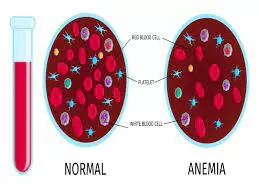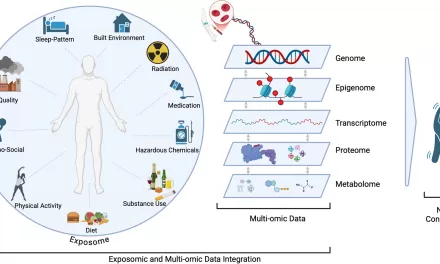In a significant move to tackle the widespread issue of anemia, the Government of India has implemented the Anemia Mukt Bharat (AMB) strategy. This initiative aims to reduce the prevalence of anemia across six beneficiary age groups, employing a comprehensive and multi-faceted approach.
Mission Poshan 2.0: Addressing Malnutrition and Anemia
Mission Poshan 2.0, a flagship programme of the Government of India, addresses malnutrition with a focus on improved health, wellness, and immunity through community engagement, outreach, behavioral change, and advocacy. The programme emphasizes maternal nutrition, infant and young child feeding norms, and the treatment of Severe Acute Malnutrition (SAM) and Moderate Acute Malnutrition (MAM). Additionally, it promotes wellness through AYUSH practices to combat wasting, underweight prevalence, stunting, and anemia.
Under Mission Poshan 2.0, supplementary nutrition is provided to children (6 months to 6 years), pregnant women, lactating mothers, and adolescent girls (14 to 18 years) in aspirational districts and North-East states. These efforts aim to bridge the nutrient intake gap and improve overall health outcomes.
The 6X6X6 Strategy: A Lifecycle Approach
The AMB strategy adopts a lifecycle approach with the 6X6X6 framework targeting six age groups:
- Children 6-59 months
- Children 5-9 years
- Adolescents 10-19 years
- Women of reproductive age (15-49 years)
- Pregnant women
- Lactating women
The six key interventions under this strategy include:
- Prophylactic Iron Folic Acid Supplementation
- Periodic deworming
- Intensified year-round Behavior Change Communication Campaign
- Testing of anemia using digital invasive hemoglobinometer and point-of-care treatment
- Mandatory provision of Iron Folic Acid fortified foods in public health programmes
- Addressing non-nutritional causes of anemia in endemic pockets
To ensure effective implementation, six institutional mechanisms are in place:
- Inter-ministerial coordination
- Convergence with other ministries
- Strengthening supply chain and logistics
- Engaging the National Centre of Excellence and Advanced Research on Anemia Control for capacity building of healthcare providers
- Monitoring using the AMB dashboard
Rice Fortification Initiative
In a bid to combat anemia through dietary means, the Government has initiated the Rice Fortification Initiative. This involves the phased distribution of fortified rice enriched with iron, folic acid, and vitamin B12. The initiative is integrated into various schemes, including the Targeted Public Distribution System (TPDS), Pradhan Mantri Poshan Shakti Nirman (PM-POSHAN) Scheme, Integrated Child Development Services (ICDS) Scheme, and other welfare schemes across all states and union territories.
Awareness and Outreach
To further amplify the impact, the Government conducts dedicated activities during Poshan Maahs (Nutrition Months) in September and Poshan Pakhwadas (Nutrition Fortnights) in March-April. These periods focus on raising awareness about anemia and promoting health education.
Measuring Progress
The success of the AMB strategy is measured through the coverage of Iron Folic Acid (IFA) supplementation among beneficiaries. State-wise progress is meticulously monitored, and the data on IFA coverage among women is regularly updated.
Conclusion
Through the AMB strategy and Mission Poshan 2.0, the Government of India is making significant strides towards reducing anemia and improving nutritional outcomes across the nation. These initiatives highlight the government’s commitment to addressing malnutrition and ensuring better health and wellness for its citizens.
Annexure
State-wise Iron Folic Acid (IFA) coverage among women across the country
(Source: HMIS 2023-24)
| States/ Union Territories |
Percentage of Pregnant women provided 180 IFA Red tablets | Percentage of Lactating women provided 180 IFA Red tablets |
| India | 95.0 | 65.9 |
| A & N Islands | 61.9 | 77.5 |
| Andhra Pradesh | 95.0 | 86.1 |
| Arunachal Pradesh | 91.5 | 57.4 |
| Assam | 95.0 | 65.4 |
| Bihar | 90.8 | 51.4 |
| Chandigarh | 95.0 | 95.0 |
| Chhattisgarh | 95.0 | 79.8 |
| D&DH and D&D | 95.0 | 95.0 |
| Delhi | 95.0 | 62.6 |
| Goa | 95.0 | 80.6 |
| Gujarat | 95.0 | 95.0 |
| Haryana | 95.0 | 59.7 |
| Himachal Pradesh | 89.7 | 72.1 |
| Jammu & Kashmir | 95.0 | 73.2 |
| Jharkhand | 92.4 | 76.2 |
| Karnataka | 95.0 | 88.3 |
| Kerala | 95.0 | 61.8 |
| Ladakh | 95.0 | 79.8 |
| Lakshadweep | 95.0 | 79.1 |
| Madhya Pradesh | 95.0 | 65.5 |
| Maharashtra | 95.0 | 61.9 |
| Manipur | 46.4 | 33.6 |
| Meghalaya | 68.6 | 64.2 |
| Mizoram | 81.5 | 64.6 |
| Nagaland | 71.7 | 42.4 |
| Odisha | 95.0 | 81.1 |
| Puducherry | 95.0 | 95.0 |
| Punjab | 72.8 | 49.4 |
| Rajasthan | 95.0 | 79.7 |
| Sikkim | 93.4 | 89.3 |
| Tamil Nadu | 95.0 | 61.9 |
| Telangana | 95.0 | 78.3 |
| Tripura | 95.0 | 58.6 |
| Uttar Pradesh | 95.0 | 46.8 |
| Uttarakhand | 95.0 | 64.6 |
| West Bengal | 95.0 | 92.3 |
The Union Minister of State for Health and Family Welfare, Smt. Anupriya Singh Patel stated this in a written reply in the Raja Sabha yesterday.












